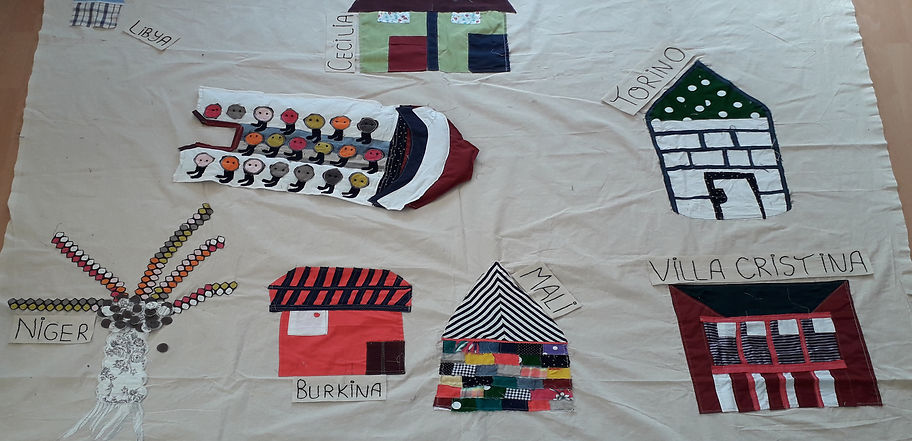Seçil Yaylalı
Qui, il riparo della mia anima

Qui, al riparo della mia anima…
2018-2019, Ameno (Italy)
textile
Qui, al riparo della mia anima… is a participatory art project with asylum seekers in which the cognitive maps of their most important travels have been transformed into arpilleras.
Villa Cristina, an unfinished hotel built for the Olympic Games in 2006, was turned into an accommodation center for asylum seekers in Ameno between 2015 and 2020 in which; more than a hundred people lived there together. They have reached the center after months, even years of traveling under very difficult conditions with crossing several countries.
Each and every one of them had arrived with desires, abilities, and professions and with a dream of a better and safer life: to be able to live among the locals as ‘individuals’ carrying their stories and experiences, just as everyone else?
Seçil Yaylalı first met them at the center to learn about their lives and to find out how they could come to work together. She collected a series of personal memories and stories about their trips, the places, where they stayed or got stuck, what they had to do to cross the border through Italy, how they managed to overcome their losses.
Over time, the project had developed around the idea of cognitive maps as a mental representation of these paths; they traced their movements and mapped the areas that intersected by marking and drawing them on paper. These drawings are simple yet very poetic in a way of an individual’s personal feelings and perspectives which are associated with the elements of each composition. The mental maps were later transferred on textiles by the artist and some people from the group who practiced tailorship in their hometown.
After a few months, in Santiago de Chile, Seçil Yaylalı found out what they created together in Villa Cristina, was something very similar to arpilleras; bright and colorful textile pictures that became popular under Augusto Pinochet’s dictatorship. Usually, they were made collectively by women to condemn human rights violations of the regime.




